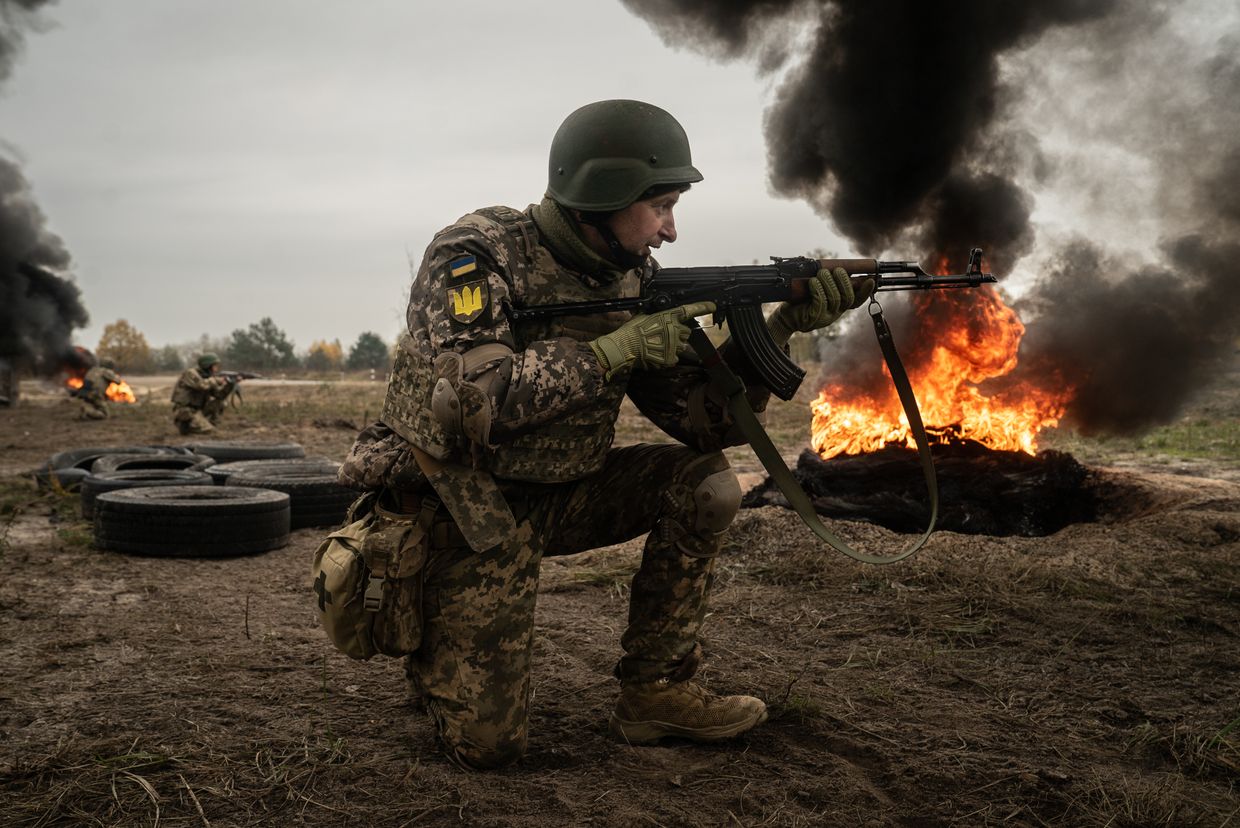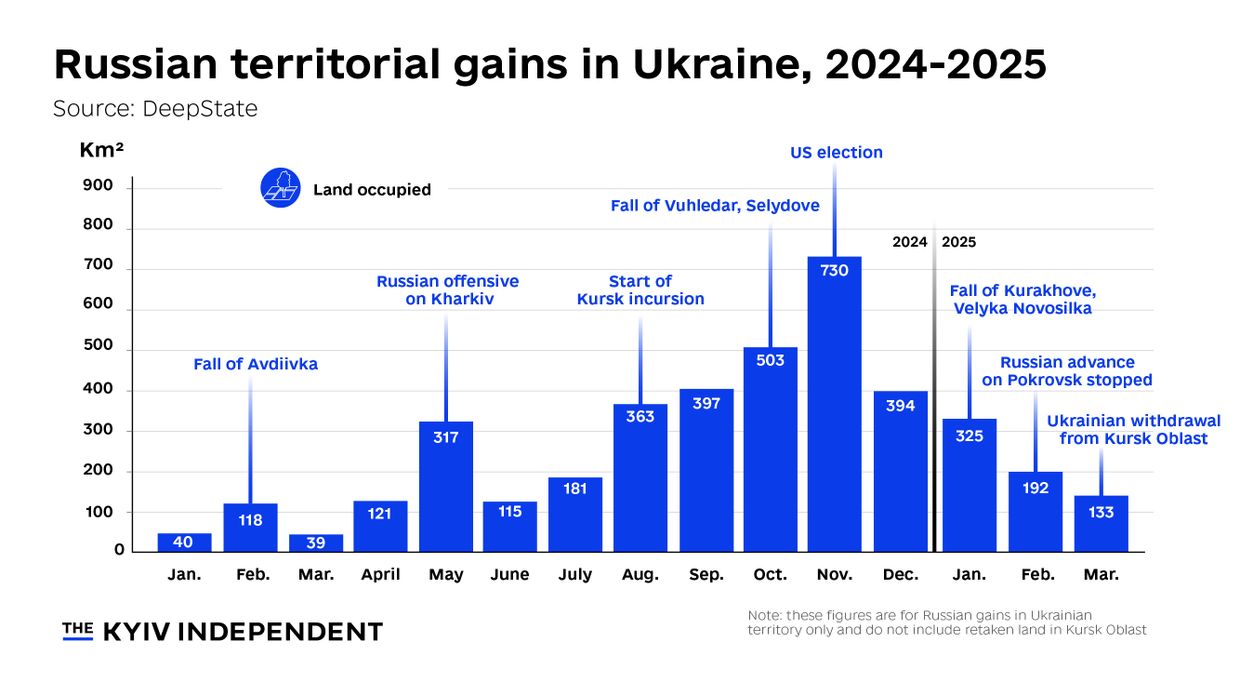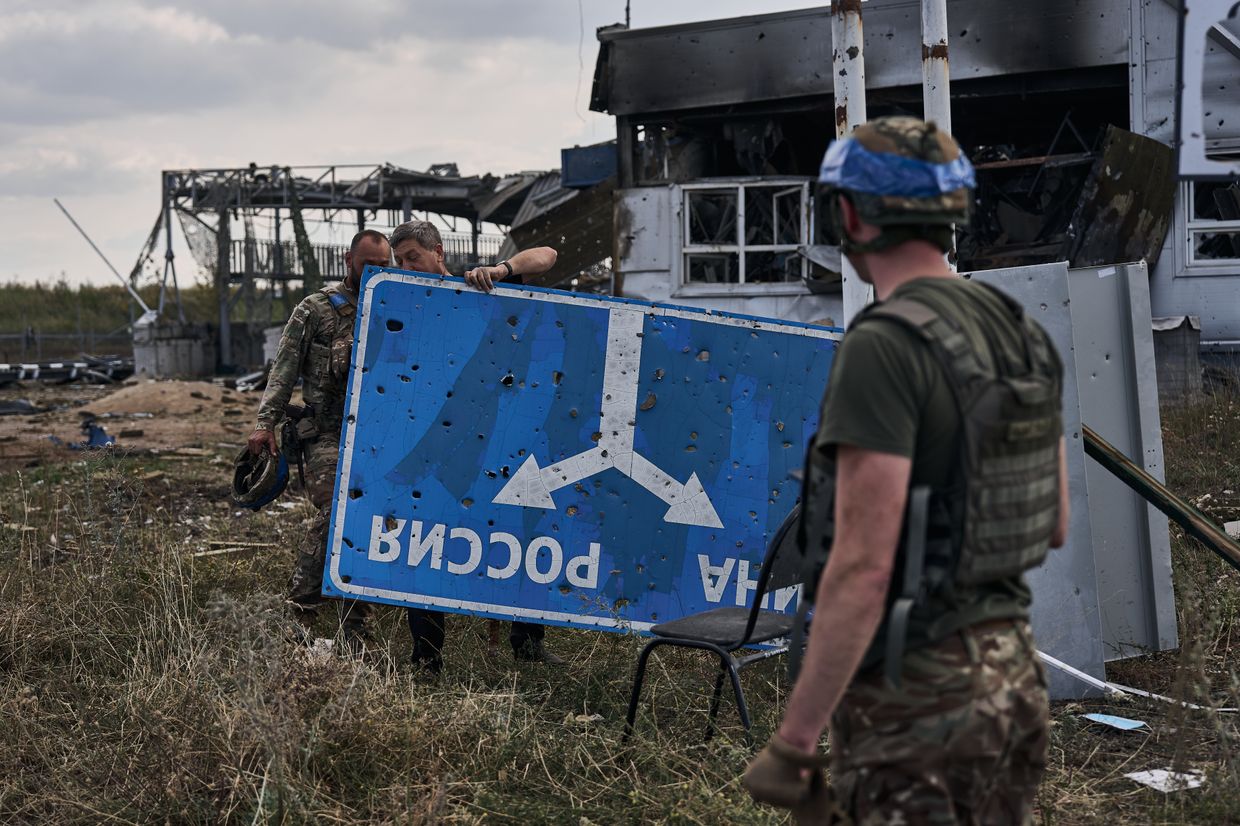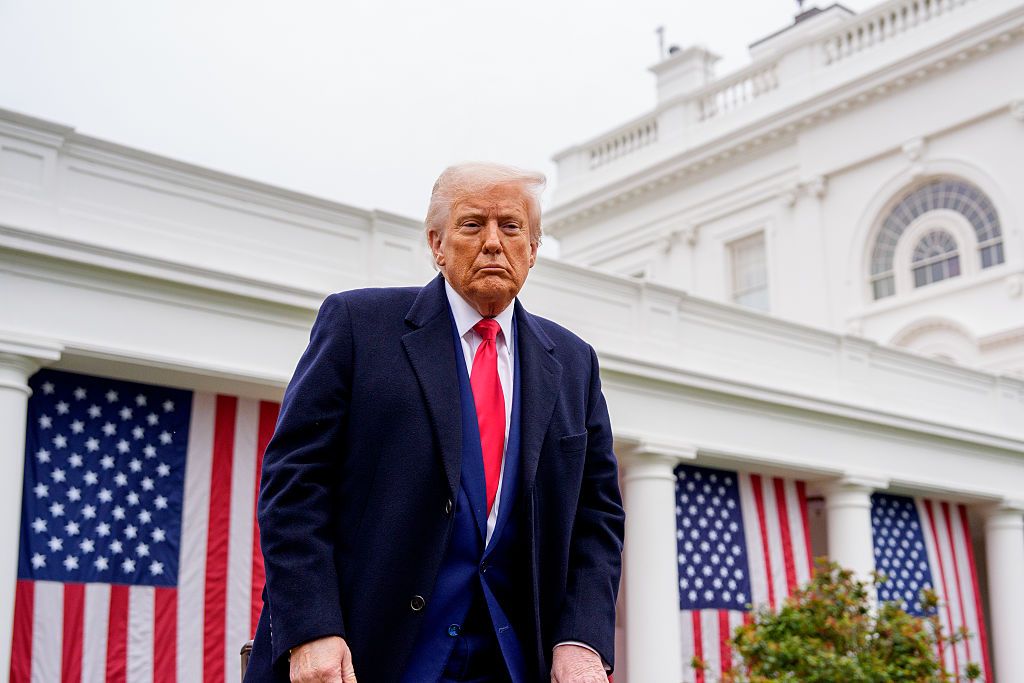In a way unseen since the start of the full-scale invasion, the daily grind of the front line in Russia’s war against Ukraine has taken the back seat in world headlines.
The dizzying U.S. President Donald Trump-led attempts to negotiate peace in the world arena dominate the news cycle instead.
But as the world reacts to each new mineral deal draft, Saudi-hosted meeting, or aggressive tweet, Russian forces continue to attack Ukrainian lines on a daily basis across the front line.
Over March, Russian forces came close to completely pushing Ukrainian troops out of the salient in Kursk Oblast that Kyiv had occupied since August 2024.
Fighting has since continued along the border areas, but despite a costly and, at times, chaotic retreat from the salient, Ukrainian units in the area have taken up an active defense and prevented a major breakthrough into Ukraine’s Sumy Oblast located just across the border.
Meanwhile, Ukrainian forces have successfully brought Russian advances inside Ukrainian territory to a crawl, with monitoring group DeepState recording that Russian gains for March 2025 were at their lowest since last June.
With peace talks entering a make-or-break phase, the stage is set for a pivotal new clash of armies across the front line.
On March 27, President Volodymyr Zelensky said that Russia was preparing new, large-scale offensives across Ukraine’s northern border in Sumy and Kharkiv oblasts.
Meanwhile, in southern Donetsk Oblast, which has been the main hotspot of the front line since the fall of Avdiivka in February last year, the military reports a new uptick in Russian attacks.
Inside Ukraine’s desperate race to train more soldiers
New recruit Vitalii Yalovyi knew one thing after completing the Ukrainian military’s boot camp: He was not prepared for war. The 37-year-old felt physically unfit, forcing him to miss some courses during the month-long training. His leg was still hurting from long daily walks at a training center i…

Winter slowdown
Ukraine’s success in stabilizing the front line over winter was far from a foregone conclusion.
Over summer and autumn 2024, Russia was taking more Ukrainian land with each successive month, culminating in November, when successive tactical breakthroughs saw Russian forces make rapid advances in the fields northwest of the city of Vuhledar in Donetsk Oblast, turning the defense of Kurakhove into a largely unfavorable pocket, which in turn led to difficult and chaotic retreats from the units stationed there.
With the onset of the new year, failing to enter Pokrovsk in a head-on assault like in the cities of Toretsk and Chasiv Yar thanks to a well-prepared Ukrainian defense, Russian forces attempted to enclose Pokrovsk and neighboring Myrnohrad with wide pincers on its eastern and western flanks, coming within five kilometers of the border of Dnipropetrovsk Oblast in the process.
These attempts were ultimately stymied by a stubborn Ukrainian defense in February, which has since conducted successful counterattacks in the area.

“High losses probably led to a degree of exhaustion and a need to regroup,” said John Hardie, deputy director of the Russia program at the Foundation for Defense of Democracies.
“Some of that may have been a dip in operational tempo as different units were repositioned in different directions. That said, the Russians are still recruiting at a really high rate, so the issue is not a lack of manpower.”
Although Russia has slowed significantly near Pokrovsk, less-intense parts of the front have activated over March, threatening to flare up into larger offensives.
Taking advantage of a defense manned by less prepared Ukrainian units, Russian forces have managed to expand a bridgehead across the Oskil River north of Kupiansk in Kharkiv Oblast, while south of the city, a similar crossing was achieved on the Zherebets River, near the Ukrainian-held territory in Luhansk Oblast.
Russian forces push to secure ground west of Oskil River in Kupiansk sector, Ukraine says
Kupiansk has remained a focal point of military activity for months, with Russia seeking to reclaim lost ground and create more favorable conditions for broader offensives in Kharkiv Oblast.

Angles of attack
“If I had to guess, their main effort would still be around central Donetsk, Pokrovsk, Kostiantynivka directions, possibly seizing Toretsk and maybe even trying to advance toward Kramatorsk,” Emil Kastehelmi, a Finnish military analyst and member of the Black Bird Group open-source intelligence collective told the Kyiv Independent.
In keeping with long-held goals to conquer all of Donetsk Oblast, Moscow could choose to breathe new life into its offensive on the embattled city of Pokrovsk, which has been the hottest sector of the front line for the last six months.
Further south, Ukraine’s hold on the southern reaches of Donetsk Oblast continues to be chipped away by Russia following the fall of the cities of Kurakhove and Velyka Novosilka during winter.
In an early teaser of what could be a larger offensive push, Russia launched a large mechanized attack in the first days of April in the town of Andriivka, just west of Kurakhove, according to Ukraine’s 46th Airmobile Brigade, which reported three Russian tanks, eleven armored vehicles, and 58 personnel destroyed in the unsuccessful attempt to break through Ukrainian lines.
On March 31, Commander-in-Chief Oleksandr Syrskyi said that Russian forces had once again upped the intensity of attacks in the Pokrovsk sector, but so far without success, with Ukraine’s active defense in the area holding firm.
As warned by Zelensky, while keeping up the pressure in Donetsk Oblast, Russia could also look to create strategic dilemmas for Ukraine by launching new pushes across Ukraine’s northern border into Sumy or Kharkiv oblasts.
Alternatively, closer in line with Russia’s stated goals to control all four oblasts the Kremlin said it annexed in September 2022, an offensive from the south towards Zaporizhzhia is also possible, evidenced by a recent uptick in the fighting there reported by Kyiv in late March.
Moscow’s opening of a new front to spread the pressure on the Ukrainian defense would have precedent from last year’s spring campaign.
The cross-border offensive on Kharkiv in May 2024, while failing to break into artillery range of Ukraine’s second-biggest city, did force Kyiv to draw away some of its strongest brigades and drone units from the eastern front, likely helping Russia press the advantage in its push towards Pokrovsk.
Ultimately, where Russia chooses to move will be a question of priorities and forces available, argued Hardie.
“Despite the ill-fated Kharkiv offensive and attacks in other areas (in 2024), the Pokrovsk direction remained the main effort where Russia devoted the vast majority of its daily assaults and resources last year,” he said.
“It’s unlikely they could replicate what they’re doing in Pokrovsk in terms of tempo and the number of bodies they throw at Ukrainian positions in two places at once. They would have to prioritize one or the other.”
The rise and fall of Ukraine’s Kursk gambit
As Ukraine’s seven-month-long incursion into Russia’s Kursk Oblast came to what appears to be its end, Ukrainian soldiers and military experts are questioning the operation’s goal and the long-term effect it will have on the war. Ukraine launched a surprise cross-border incursion into Russia’s Kurs…

Key matchups
On the tactical level, both sides are preparing for a spring campaign set to be defined by the brutal new reality of war under a sky completely saturated with drone-based reconnaissance and fire assets.
For both sides, the ability of enemy drones to control logistics routes up to and often beyond ten kilometers behind the zero line has meant that any movement in this zone, whether of a vehicle or just an individual soldier, could become the target of multiple high-precision strikes just a few minutes after being noticed.
The proliferation of electronic warfare (EW) systems has provided serious relief for vehicles driving near the front line over 2024, but the increased use by both sides of suicide drones with a hard fiber optic connection has rendered EW far from a complete solution.
Beyond the stereotypical image of muddy spring ground complicating the use of armor, the warming weather and return of foliage to the trees present challenges and opportunities for both sides.
Overall, the most felt changes may not be the weather itself but simply the continued march of drone saturation, where seismic changes in scale, technology, and danger tend to occur every few months.
“For the attacker, large mechanized troop concentrations become really difficult, especially given the drone warfare situation,” said Kastehelmi, “and this forces the Russians to continue using infantry-heavy tactics.”
“At the same time, Ukrainian forces continue to stubbornly defend certain areas even as the Russians advance on the flanks, making their supply lines more and more vulnerable to Russian drone strikes.”
Ultimately, with both sides throwing everything at drone development, the deciding factor is likely to be the asymmetrical manpower dimension.
For Moscow, the question is if Russia can continue to feed enough men into its wave-like infantry assault tactics on the same scale as in 2024, while for Kyiv, whether they can mobilize and train enough combat-effective infantry to patch up holes in the front line and maybe even allow for the rotation of units.
“Ukraine does a really good job of using FPVs and heavy bombers, and drone-laid mines to degrade Russian assault groups, often before they reach Ukrainian positions, helping compensate for the shortage of infantry,” said Hardie.
“I don’t expect the Russians to start making rapid gains. They have clearly shown they are incapable of an operational-level breakthrough, and I don’t expect that to change.”
All on the line
With the Trump administration’s attempts to achieve a limited ceasefire failing to show any signs of getting Moscow to stop on the battlefield, the results of the spring campaign could bring the most decisive weight on to the balance of power between Russia and Ukraine.
“Putin believes he has the upper hand on the battlefield and wants to press that advantage despite the peace talks initiated by Donald Trump,” said Hardie.
“He not only wants to gain more territory but also more leverage at the negotiating table.”
If Moscow can reverse the current trajectory and once again begin to overstretch and overwhelm the Ukrainian defense in several sectors, the political choice to refuse a future problematic peace deal and keep fighting without U.S. support could be a lot more difficult to take.
“The manpower issue remains,” said Kastehelmi, “and there is significant uncertainty regarding the foreign and security policy environment.”
If, however, Ukrainian forces are able to hold firm along the front line, fixing mistakes and systemic problems leading to the manpower crisis while continuing to increase the efficiency of its drone units, Kyiv’s position will be a lot stronger.
As Russia refuses to accept ceasefire, will Trump pressure Moscow?
Three weeks ago, Ukraine and the U.S. agreed to implement a full 30-day ceasefire. Russia declined to do so, issuing a list of demands instead. On April 4, Russia hit a residential neighborhood in the city of Kryvyi Rih with ballistic missiles and drones, killing 19 people, including nine





